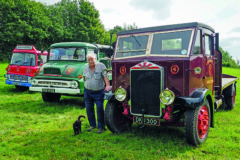1958 Power Major Roadless
Posted by Chris Graham on 17th February 2021
George Nisbet owns a 1958 Power Major Roadless that has been in the family since 1964. Bob Weir went to Aberdeenshire to meet them both.
Photography: George Nisbet
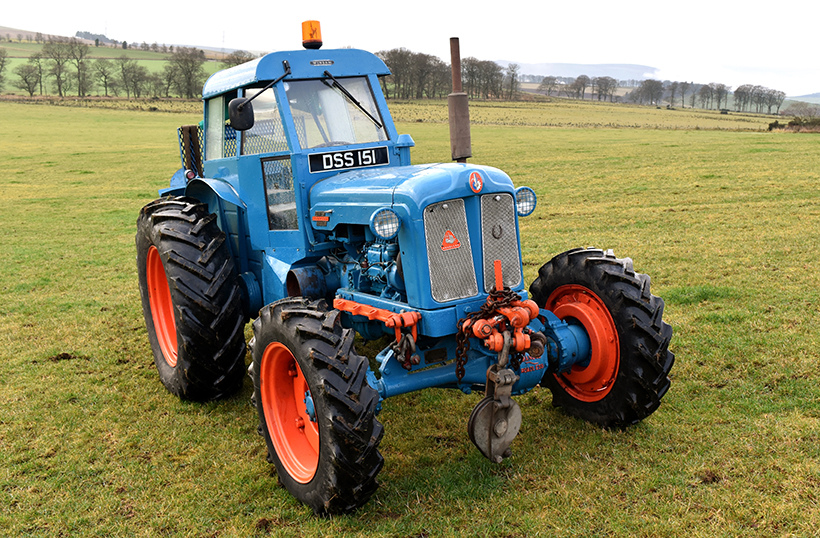
The 1958 Power Major Roadless has been in the Nisbet family for over 50 years. The ‘Manuel’ logo on the differential housing (partially obscured by the winch), was actually the name of Signor Selene’s son. It was used as a marketing ploy to get rid of a big stock of older tractors, and appeared on early Roadless machinery. The name was subsequently dropped when Roadless started making its own designs.
“I’ve lived in the area for nearly 20 years, although I was born and raised at Kirknewton, near Edinburgh,” George explained to me. “My grandfather had a farm there and grew mainly cereals. Once I had passed my apprenticeship as a joiner, I was given the opportunity to either move to Sydney to help with the construction of the 2000 Olympic Games, or buy a house. I had a friend who lived in Aberdeenshire, so decided to acquire a property to renovate and sell-on. I’ve been here ever since.”
George has been keen on Fordson tractors since he was a young lad. “My grandfather bought my other tractor – the 1963 Fordson Dexta – when it was new,” he said. “It was purchased for my father when he left school at the age of 16, so he could work on the farm. That machine cost £600, and was supplied by Alexanders, which was the main Fordson dealer in the area. It was also supplied with the wooden Duncan cab, which cost an extra £44, but my grandfather was livid about this. He hadn’t ordered the cab although, after some thought, decided to pay for it anyway.
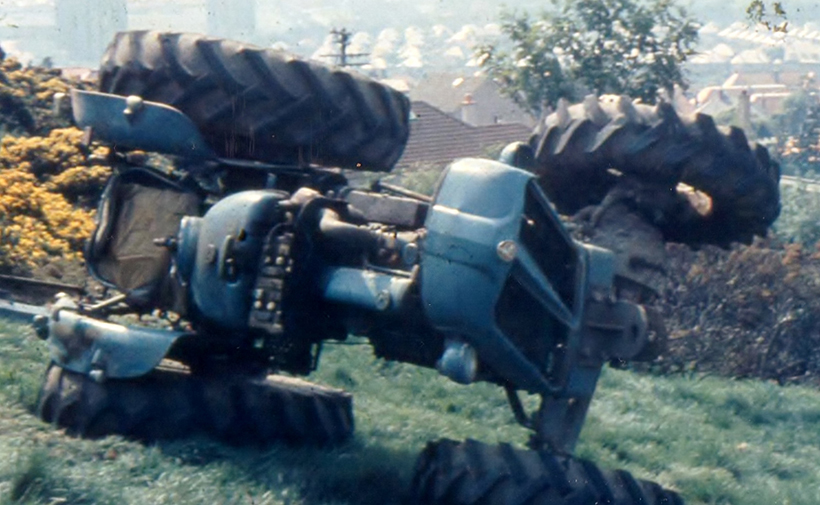
DSS 151 comes to grief in the early 1970s, while engaged in pipe-laying work on the Braid Hills, in Edinburgh. According to George, the only thing that stopped the tractor rolling all the way down the hill was a hydraulic tipping pipe, which was connected to the trailer.
“I used to drive the Dexta when I was growing up, and remember it was especially handy for bringing in the barley. When my grandfather died, our family gave up the leasehold on the farm, and my father was left with the tractors. He stored them away in a shed, where they just sat around gathering dust. Then, a few years ago he asked me if I wanted the Dexta, so I arranged to have it delivered up here.”
Having brought the tractor to Aberdeenshire, George decided to give the machine a thorough makeover. Once he had finished restoring the Dexta, his father then offered him the Power Major Roadless.
“My father had started collecting old lorries by that stage, and needed the space,” he said. “The Roadless was built in 1958, and my grandfather bought the machine secondhand from Alexanders, back in 1964. I believe it was originally new to a farm in East Lothian, as ‘SS’ is an East Lothian registration.”

George as a young lad in the late 1960s, getting to grips with some winching work!
Roadless Traction Ltd was first registered on March 14th, 1919, and was the brainchild of Lieutenant Colonel Philip Johnson, who had served in the Great War. The business started making tracks for trucks and agricultural crawlers. Up until the 1950s, Johnson also designed half-tracks for most popular makes of tractor, before moving on to 4WD systems. This continued until 1983, when the company was forced to cease trading.
“My grandfather originally used the Major for farm work for several years, before deciding to add a Cooks two-speed winch that he’d acquired from Lord Rosebery, on the nearby Dalmeny Estate. The winch had originally been used for pulling timber for the estate’s sawmill. By this time, my grandfather had some other irons in the fire, including a few JCBs and diggers that he used for recovery work. It was also around this time that he added the Winsam cab, which he took off another tractor. The Roadless was then added to his small fleet of recovery vehicles.”
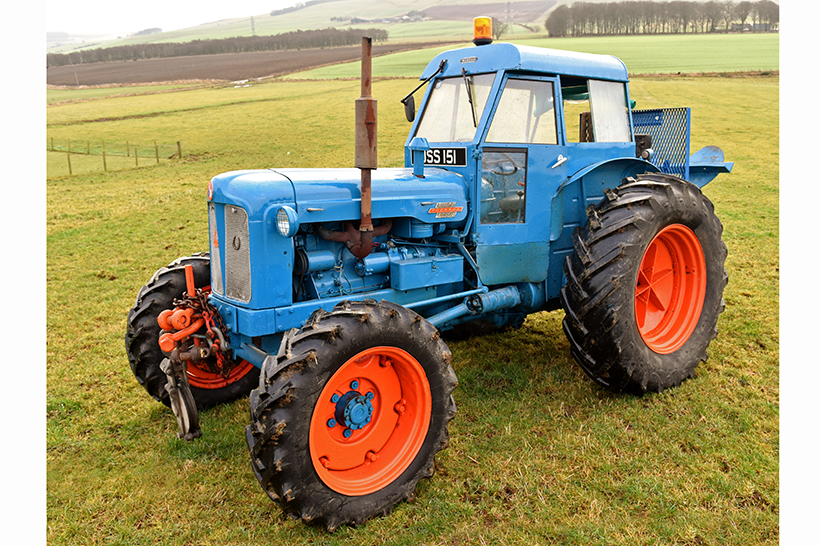
Although George’s Roadless started out as a farm tractor, the subsequent addition of the Cooks winch on the front gave the Power Major a new lease of life.
It has been said that the Fordson Major underwent more conversions than any other tractor. Several companies were involved, including Roadless, County, Doe, Chaseside, JCB, Matbro, Bray and Muir Hill. They all used the Major or skid units, and adapted them for their own purposes.
Roadless, in particular, was a big fan of the model, and converted Fordson Majors to run on tracks. The company had originally obtained a license in 1954, from the Selene engineering company based in Italy. This entitled it to sell Manuel-type 4WD axles and transfer boxes in Britain, Canada, and the USA, with the proviso they could only be fitted to the Fordson Diesel Major. The first kits were bought directly from Selene, but Roadless was subsequently allowed to manufacture the transfer boxes itself. Selene was paid a royalty for each conversion.
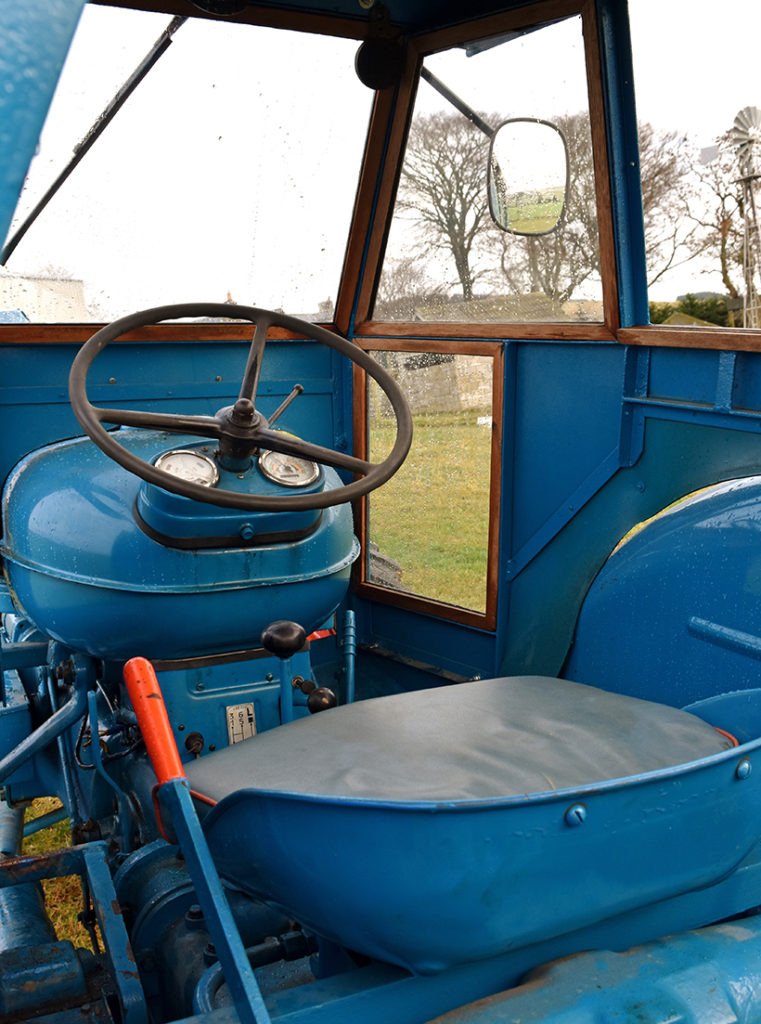
Winsam was a manufacturer that built tractor cabs during the 1950s and ‘60s, in the days before safety cabs became compulsory. They were usually fitted by local tractor dealerships before delivery, and provided some relief from bad weather. However, they were very draughty and lacked both roll-over protection and sound-proofing.
Roadless 4WD conversions were especially popular with forestry companies. The tractors were usually fitted with cage cabs and high-capacity winches. Some examples are still working today, and continue to make financial sense for small operators. Roadless Fordson Majors are also popular with enthusiasts, who appreciate the tractors’ tough and workmanlike abilities.
“My father carried on hiring-out plant for recovery work,” said George. “Together with my uncle, he also ran some milk tankers and tipper lorries. I’ve had the Roadless for about eight years. I believe the tractor was supplied with two sets of front wheels when new. One had normal centres while the others were weighted. As things stand, DSS 151 is currently using the weighted pair, because the other set was misplaced at some point in the past. As you might imagine, the tractor’s handling is quite heavy, and it’s also pretty noisy inside the cab.”
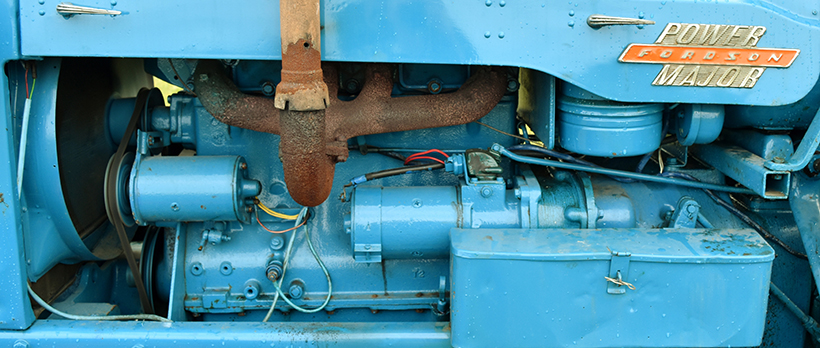
The Power Major was an upgraded Fordson model, introduced in 1959. The performance of its diesel engine was boosted by 22%, thanks to a modified fuel-injection system, camshaft, cylinder head and rocker arms. Other improvements included an uprated differential, a live PTO, and optional power steering.
Nevertheless, George enjoys taking the Roadless to shows, and has also got involved in several road runs to raise money for charity. “Back in July 2016, a group of us did a six-day road run on a route that took us around the Western Isles. The aim was to raise money for the Blythewood Care Home,” he recalls.
“I decided to drive the Super Dexta, and the run started near Stonehaven, and the first stop was in Inverness. It took six hours to cover the 100 or so miles. The next stage of the trip was a drive up to Ullapool, where we took the ferry across the stretch of water known as The Minch, to the town of Stornaway, on the Isle of Lewis.
“We then joined a local road run from Stornoway down to Harris, and there were probably about 16 tractors on this leg of the journey. We stayed at Leverburgh on Harris for a couple of nights, which allowed us to attend an agricultural show there, before we caught another ferry that took us all back across The Minch to the Isle of Skye.

George Nisbet with his Power Major and Super Dexta.
“We drove across Skye to Broadford, in the south of the Island, before taking yet another ferry that was bound for Mallaig, on the Scottish mainland. After this the route continued along the A830, through Glenfinnan and to Fort William.
“The Jacobite steam railway also covers the same route, and the impressive, 21-arch Glenfinnan viaduct seen along the way was featured in one of the Harry Potter films. The sight of an old steam train next to some classic tractors must have brought back some fond memories. We spent our last night at Newtonmore, before driving back to Aberdeenshire the following day. It was a very enjoyable trip.”
For a money-saving subscription to Ford & Fordson Tractors magazine, simply click here



